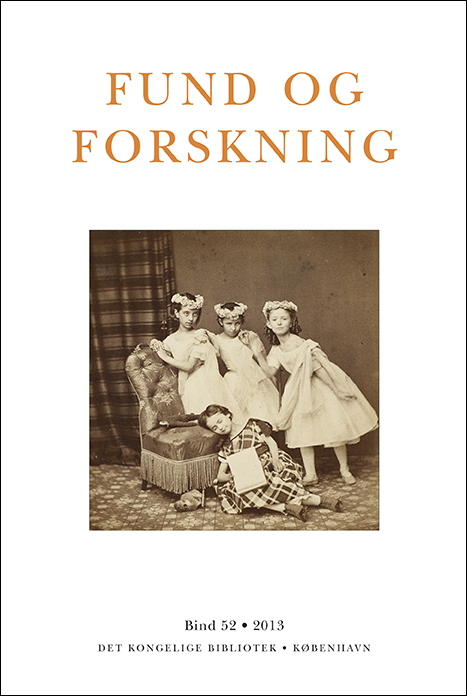Armeniske bøger fra 15-1700-tallet i Det Kongelige Biblioteks samlinger
DOI:
https://doi.org/10.7146/fof.v52i0.41295Resumé
In 2012, through various presentations and exhibitions, the 500th anniversary of the
first printed book in Armenian was celebrated. Thus, 19 Armenian books printed from
1565 to 1745, belonging to the collections of the Royal Library, were on display in the
Black Diamond.
These books are described in their original historical contexts above. It is underlined
that initiatives taken by the Armenian Church were important in the early history
of Armenian printing. For example, the Armenian Catholicos was active in establishing
a printing house in Amsterdam, and quite a few of the early books were intended
to meet ecclesiastical needs for books of ritual and pious practices, including the Psalter
editions: Venice 1565, Amsterdam 1664, Marseille 1677; a Hymn Book: Amsterdam
1664; and a Breviary: Amsterdam 1705.
On the other hand, the publishing of certain books must be seen in the context of
Roman Catholic missionary endeavours, e.g. the publication of documents concerning
the Gregorian Calendar, translated into Armenian as early as 1584 (printed in Rome),
a translation of Thomas à Kempis’ Imitatio Christi (printed in Constantinople 1700),
and a collection of fourteenth century Dominican sermons (printed in Venice 1704).
The collection also contains early editions of important works by medieval Armenian
authors, including Moses Khorenatsi (Amsterdam 1695), Gregory Narekatsi
(Constantinople 1701) and Nerses Shnorhali (Venice 1660). In addition, there are
a couple of contemporary Armenian works: Arakel’s ‘histories’ about seventeenth
century Armenian history (Amsterdam 1669) and eighteenth century Constantinople
patriarch Yakob Nalean’s Commentary on Gregory Narekatsi (Constantinople 1745).
In some cases, various owners’ ex libris or marginal notes allow glimpses into the
use of the books by Western scholars and their routes through the hands of book
traders and collectors. To name just a few: 1) M.V. de la Croze, the famous orientalist,
on the basis of a Lipsian manuscript, added a fairly large number of collational notes
to the text of the 1695 Moses Khorenatsi edition; 2) one of the two copies of the 1664
Psalter is dedicated to Frederik III of Denmark by Theodore Petraeus, a Danish scholar
who was active in the Armenian-Dutch publishing world in the 1660s; 3) and some
150 years after Theodore, another Danish Orientalist, Bishop Fr. Münter, is seen to
have acquired an old Armenian grammar (Amsterdam 1666).
The 19 books do not represent a collection that has been systematically built up
according to a master plan by any librarian or scholar of the time. However, it can be
considered to be broadly illustrative of the Armenian culture of that period, not least
of its early links with Western printers, binders, artists and authorities, and the trend
that shows Eastern centres (Constantinople and others) gaining ever increasing importance
throughout the centuries in focus.


